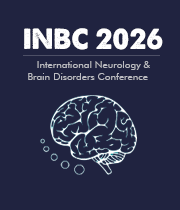Tau Protein
Tau is a protein expressed in the cells of the human nervous system. These cells, known as neurons, rely on the stability of this protein to ensure communication between the various regions of the brain and spinal cord. Tau proteins bind to microtubules, which are a type of filamentous protein structure that forms the framework of the cell. Tau functions to maintain the shape and the stability of the microtubules, allowing neurotransmitters to be transported in a rapid and efficient manner. Mutations of the Tau protein can lead to neurodegenerative diseases, such as Alzheimer's and frontotemporal dementia, which involve the progressive deterioration of the nervous system. In these conditions, increased amounts of abnormally shaped tau proteins form aggregates in the brain, leading to the breakdown of neuronal connections and impairing communication between brain regions. The tau protein is also involved in the body's defense system. In response to cellular stress, Tau proteins can act as an anti-apoptotic mechanism to protect cells from apoptosis. In addition, tau proteins help to reduce inflammation and promote neuron survival by regulating the release of pro-inflammatory cytokines. Tau proteins have also been suggested to function as regulatory proteins in the brain. Studies have indicated that Tau helps ensure proper functioning of synaptic transmission and neuronal networks, and may play a role in memory formation and recall. Additionally, tau proteins appear to be involved in the maintenance of normal neuronal homeostasis. Overall, the Tau protein performs a wide variety of functions to ensure communication between neurons in the brain and prevent the development of neurodegenerative diseases. Recent advances in research have suggested an increased role of tau proteins in regulation of neuronal functioning and homeostasis. Further research into the regulatory functions of tau proteins will lend more understanding of the normal functioning of neurons and the development of neurological diseases.

Joe Sam Robinson
Mercer University, United States
Robert B Slocum
University of Kentucky HealthCare, United States
George Diaz
Memorial Healthcare Systems, United States
Daniel Curry
Texas Children’s Hospital, United States
Zhenhuan Liu
Guangzhou University Chinese Medicine, China
Kiran Ghotra
Lake Erie College of Osteopathic Medicine, United States




Title : Atypical presentation of Juvenile myoclonic epilepsy in a 16-year-old female: A Case Report
George Diaz, Memorial Healthcare Systems, United States
Title : Narrative medicine: A communication therapy for the communication disorder of Functional Seizures (FS) [also known as Psychogenic Non-Epileptic Seizures (PNES)]
Robert B Slocum, University of Kentucky HealthCare, United States
Title : Nanoparticles passing the blood brain barrier to treat cancer, infection, and more
Thomas J Webster, Brown University, United States
Title : Managing healthcare transformation towards personalized, preventive, predictive, participative precision medicine ecosystems
Bernd Blobel, University of Regensburg, Germany
Title : Transcranial painless neurorehabilitation scalp acupuncture electrical stimulation for neuroregulation of autism spectrum disorder
Zhenhuan Liu, Guangzhou University Chinese Medicine, China
Title : The million-dollar workup
Zoe Reinus, University of Connecticut, United States